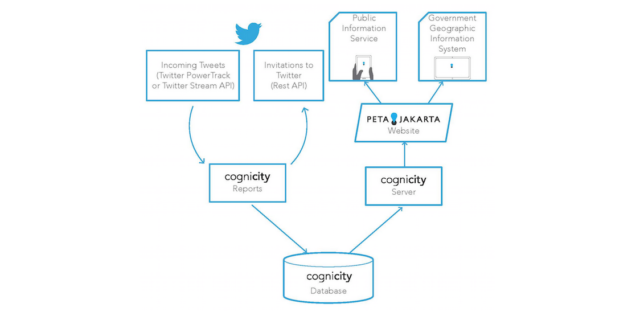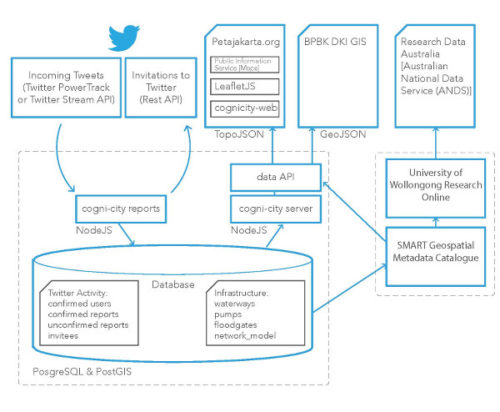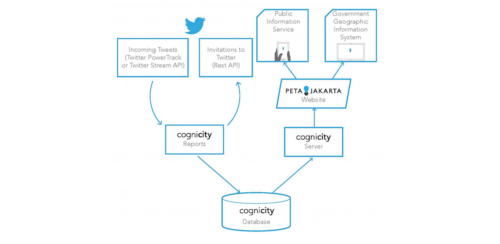CogniCity harnesses the power of social media by gathering, sorting and displaying real-time situational reports from urgent urban infrastructure issues such as flooding or traffic congestion. It makes this information available in real-time to citizens in need of daily information, and meanwhile conducts predictive analysis to better inform prepare for future planning.
The objective of CogniCity is to remove redundancies in the study and promotion of urban resilience to extreme weather events as a result of climate change; the elimination of redundancies occurs because CogniCity can be used simultaneously to study patterns and practices of resilience among users and government agencies, and to enable more effective sharing of information between citizens, government agencies, and NGOs. CogniCity is a fully developed and tested OSS platform that uses a GeoSocial Intelligence Approach to urban data collection, analysis, and sharing. Such a system has a wide variety of applications for civic co-management as a strategy for adaptation to climate change, not least because the OSS is designed from first principles to be transferable among various domains of application (such as other weather-related hazards, waste management, or crime) and other geographies and languages.




